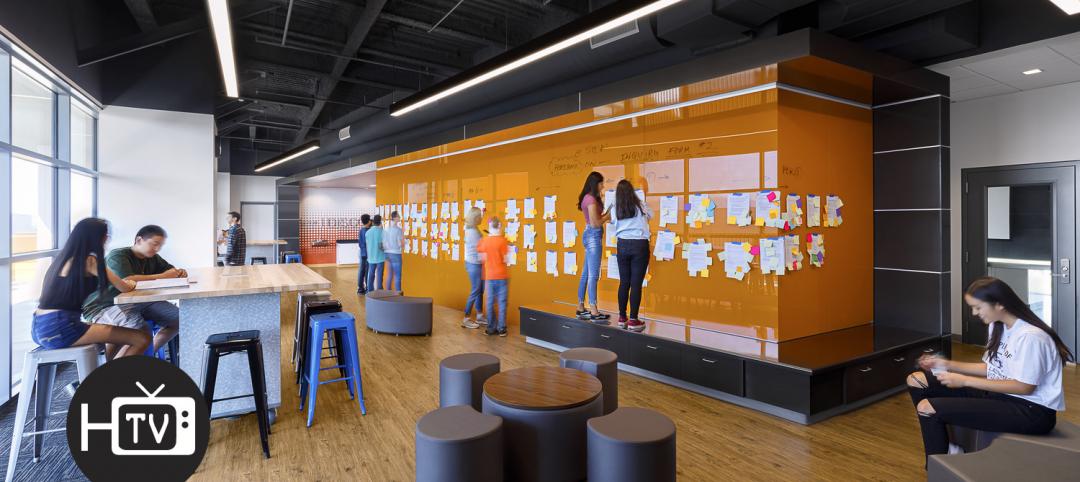According to a study of data from the Building Owners and Managers Association (BOMA) International’s Experience Exchange Report (EER) by Kingsley Associates, the commercial real estate industry’s ongoing focus on energy efficiency has resulted in a downward trend in total operating expenses.
Analysis reveals that properties in the United States reduced total operating expenses from $8.18 to $7.86 per square foot (psf) on average from 2011 to 2012, a difference of $0.32 or 3.9 percent. About two-thirds of these savings were achieved in the utility category, where average expenses fell $0.21—a whopping 9.0 percent—to $2.12 psf, underscoring an industry focus on maximizing building efficiency and smart asset management.
Nearly all building types boasted operating expense savings during 2012. Only corporate facilities saw total operating expenses remain essentially unchanged with a slight 0.5 percent increase. Downtown buildings remained, on average, more expensive to operate than their suburban counterparts, and they also reported a slightly smaller expense savings (4.1 percent versus 6.4 percent for suburban buildings).
As with total operating expenses, the decrease in utility expenses per square foot in 2012 also was broad-based. Private sector office buildings in both downtown and suburban locations observed an identical 9.3 percent reduction, though costs remain higher at downtown locations. Multi-tenanted buildings were able to achieve greater savings than corporate or single-tenanted facilities (9.6 percent versus 3.8 percent), but the trend was the same for both. However, not all property types saw a decline in this area. Utility costs rose 2.7 percent at medical office buildings and 4.2 percent at government-occupied facilities.
In addition to substantial savings on utilities, analysis also revealed that private sector office buildings spent $0.06 (4.0 percent) less per square foot on cleaning in 2012. Cleaning and administrative expenses are essentially tied as the third largest expense categories, behind utilities and repairs/maintenance. Building owners and managers were also able to make modest cuts in security and roads/grounds expenses (a $0.03 decrease in each category), though these categories are small relative to others.
These findings are based on an examination of a specialized control sample of more than 2,000 private sector buildings representing 385 million rentable square feet of U.S. office space that submitted both 2011 and 2012 expense data to the EER database. The sample only includes buildings meeting certain criteria in order to control for the impact of major renovations and changes in occupancy on operating expenses to ensure trends captured are representative of market reality. A complete analysis can be found in the latest issue of The BOMA Magazine.
With detailed income and expense information from more than 5,300 buildings across more than 250 markets, BOMA International’s Experience Exchange Report (EER) is commercial real estate’s premier income and expense benchmarking tool with the largest and most accurate data available in the industry. The EER allows users to conduct multi-year analysis of single markets and select multiple cities to generate state and regional reports. It also offers the capability to search by market, submarket, building size, building type and more for broader analysis. The 2013 Experience Exchange Report is available now at www.bomaeer.com.
About BOMA International
The Building Owners and Managers Association (BOMA) International is a federation of 93 BOMA U.S. associations, BOMA Canada and its 11 regional associations and 13 BOMA international affiliates. Founded in 1907, BOMA represents the owners and managers of all commercial property types, including nearly 10 billion square feet of U.S. office space that supports 3.7 million jobs and contributes $205 billion to the U.S. GDP. Its mission is to advance the interests of the entire commercial real estate industry through advocacy, education, research, standards and information. Find BOMA online at www.boma.org.
About Kingsley Associates
The most successful firms in real estate rely on Kingsley Associates for cutting-edge business intelligence solutions. With a depth and breadth of insight unmatched in the industry, Kingsley Associates brings thought leadership and passionate client service to every engagement. Kingsley Associates is a leader in tenant satisfaction surveys, resident satisfaction surveys, client perception studies, strategic consulting and operations benchmarking. To learn more, please visit our website at www.kingsleyassociates.com or our blog at www.kingsleyinsight.com.
Related Stories
Resiliency | Aug 19, 2021
White paper outlines cost-effective flood protection approaches for building owners
A new white paper from Walter P Moore offers an in-depth review of the flood protection process and proven approaches.
Wood | Jul 16, 2021
The future of mass timber construction, with Swinerton's Timberlab
In this exclusive for HorizonTV, BD+C's John Caulfield sat down with three Timberlab leaders to discuss the launch of the firm and what factors will lead to greater mass timber demand.
Multifamily Housing | Jul 15, 2021
Economic rebound leads to record increase in multifamily asking rents
Across the country, multifamily rents have skyrocketed. Year-over-year rents are up by double digits in nine of the top 30 markets, while national YoY rent growth is up 6.3%. Emerging from the pandemic, a perfect storm of migration, enhanced government stimulus and a hot housing market, among other factors, has enabled this extremely strong growth.
K-12 Schools | Jul 9, 2021
LPA Architects' STEM high school post-occupancy evaluation
LPA Architects conducted a post-occupancy evaluation, or POE, of the eSTEM Academy, a new high school specializing in health/medical and design/engineering Career Technical Education, in Eastvale, Calif. The POE helped LPA, the Riverside County Office of Education, and the Corona-Norco Unified School District gain a better understanding of which design innovations—such as movable walls, flex furniture, collaborative spaces, indoor-outdoor activity areas, and a student union—enhanced the education program, and how well students and teachers used these innovations.
Multifamily Housing | Jul 7, 2021
Make sure to get your multifamily amenities mix right
One of the hardest decisions multifamily developers and their design teams have to make is what mix of amenities they’re going to put into each project. A lot of squiggly factors go into that decision: the type of community, the geographic market, local recreation preferences, climate/weather conditions, physical parameters, and of course the budget. The permutations are mind-boggling.
Industrial Facilities | Jul 2, 2021
A new approach to cold storage buildings
Cameron Trefry and Kate Lyle of Ware Malcomb talk about their firm's cold storage building prototype that is serving a market that is rapidly expanding across the supply chain.
Multifamily Housing | Jun 30, 2021
A post-pandemic ‘new normal’ for apartment buildings
Grimm + Parker’s vision foresees buildings with rentable offices and refrigerated package storage.
Resiliency | Jun 24, 2021
Oceanographer John Englander talks resiliency and buildings [new on HorizonTV]
New on HorizonTV, oceanographer John Englander discusses his latest book, which warns that, regardless of resilience efforts, sea levels will rise by meters in the coming decades. Adaptation, he says, is the key to future building design and construction.
Multifamily Housing | Jun 23, 2021
COVID-19’s impact on multifamily amenities
Multifamily project teams had to scramble to accommodate the overwhelming demand for work-from-home spaces for adults and study spaces for children.
K-12 Schools | Jun 20, 2021
Los Angeles County issues design guidelines for extending PreK-12 learning to the outdoors
The report covers everything from funding and site prep recommendations to whether large rocks can be used as seating.













![Oceanographer John Englander talks resiliency and buildings [new on HorizonTV] Oceanographer John Englander talks resiliency and buildings [new on HorizonTV]](/sites/default/files/styles/list_big/public/Oceanographer%20John%20Englander%20Talks%20Resiliency%20and%20Buildings%20YT%20new_0.jpg?itok=enJ1TWJ8)






